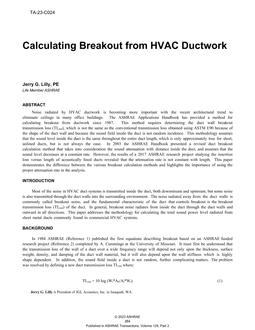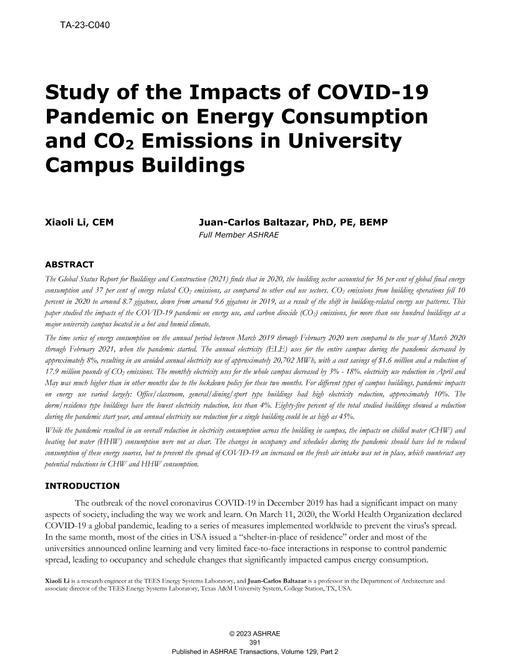-
-
Available Formats
- Options
- Availability
- Priced From ( in USD )
-
Available Formats
-
- Immediate download
-
$16.00Members pay $7.00
- Add to Cart
Customers Who Bought This Also Bought
-

TA-23-C099 – Open Building Operating System: An Open-Sour...
Priced From $16.00 -

TA-23-C023 – Decarbonization through Residential Air-Sour...
Priced From $16.00 -

TA-23-C024 – Calculating Breakout from HVAC Ductwork
Priced From $16.00 -

TA-23-C040 – Study of the Impacts of COVID-19 Pandemic on...
Priced From $16.00
About This Item
Full Description
Compact CO2 monitoring devices are increasingly being used to evaluate indoor air quality and the effectiveness of air change in indoor spaces, particularly with respect to manual window ventilation. In the past two years, CO2-levels in indoor air have also been used as a proxy for assessing the risk of airborne transmission of SARS-CoV-2. Now, due to energy-saving regulations in Europe following an energy shortage, CO2 is also being used to monitor minimal hygienic air change rates in densely occupied rooms. Compared to earlier research, CO2 sensor technology has improved significantly over the last decade. However, the accuracy and reliability of current commercially available CO2 measuring devices remain a concern. To address this issue, a lab measurement project was conducted to test the performance of 13 device types in terms of CO2, temperature and humidity deviation, measured at various operating points. The results showed that 11 of the 13 CO2 device types examined met the requirements of a measurement deviation of no more than 10% CO2 for all operating points tested. Conversely, some test devices showed deviations of over 100%. Furthermore, differences were found when testing with dry or humidified challenge gas. As previously reported in the literature, both temperature and humidity can affect CO2 readings, with a range of ± 20 ppmv up to ± 120 ppmv. In conclusion, before purchasing a CO2 measuring device, it is recommended to consult independent test reports and request independent lab reports.





